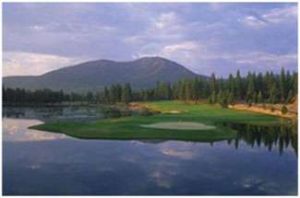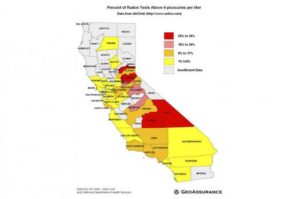The Unspoken Truth About Radon in Tahoe
How can it be that one of the biggest health concerns in our area goes mostly unnoticed? While most people have barely heard of radon, testing in our area is nearly nonexistent. Even when you buy a home, there’s a one-page disclosures section that’s buried in a 200-page document somewhere after your final closing cost summary. Local and federal governments spend little money on education and outreach while radon continues to be one of the leading causes of lung cancer.
Radon Facts and Testing
Radon is a colorless, odorless, and tasteless gas that comes from the natural breakdown of uranium in rocks and soil. Inhaling radon can lead to DNA damage, which can cause cancer. In fact, the EPA states that it is the number two cause of lung cancer in the United States after cigarette smoking: Roughly 21,000 people die every year from radon-related lung cancer. That’s a staggering number that even surpasses drunk driving. Smokers who live in a home with high radon levels are at greatest risk of lung cancer.
Despite these numbers, few people in the Tahoe/Truckee area test for radon in their homes. Testing can be cheap, easy, and worth the effort if it can save your family from future health issues. Long-term tests, from 90 days to a year, give an accurate average radon level during normal use of your home. Short-term test kits can be purchased for $12.99 at Mountain Hardware & Sports in Truckee, plus a $40 lab fee. They can also be purchased online at doctorhomeair.com for $8.45 with the lab fee included.
Radon in Truckee and North Tahoe
The most recent study and report of radon in Truckee and around Lake Tahoe was performed by the California Department of Public Health in 2006/07. They found that in the Truckee area, roughly a quarter of homes tested at or above the EPA action level of 4.0 pCi/L. In North Lake Tahoe, about 1 in 5, or 20 percent, of homes tested at or above that value. And finally, more than half of the homes in South Lake Tahoe tested higher! Anybody living in our area, whether it’s a family looking to buy a home or long-term renters, should be informed about these health concerns. But don’t let those numbers scare you away from testing, because there are several methods that have been proven to reduce the radon to a reasonable level.
Radon Mitigation
Reducing the levels of radon in your home is called mitigation and can cost anywhere between $5,000 and $6,000, according to Tahoe Water & Mold. Our homes act like vacuums and tend to suck in the air from the crawlspace. By venting the air beneath our homes outside of the crawlspace, we can reduce our exposure to radon. One of the most common methods is to install heavy duty plastic sheeting over the entire crawlspace surface, sealing the sheeting to all the concrete walls and interior footings. Then a perforated pipe is installed under the sheeting, extending to the exterior of the house, often with a low voltage fan that runs constantly. It is best to hire a certified radon mitigator, so that your system is installed correctly. These companies can also be found on the California Department of Public Health website. Since you can’t test for radon on a site where a house is going to be built, testing must be done after construction is completed. Newer homes could easily be built using techniques to reduce radon levels, but few builders have opted to install these methods. With the lack of awareness and appreciation for the health concerns, local and state jurisdictions have yet to adopt even recommendations, which could save money by installing radon-reducing measures during the construction phase.
For more immediate results, or for real estate transactions where timing is an issue, it may be more convenient to hire a certified radon tester who can provide a 48-hour radon test with a continuous radon monitor. Certified radon measurement providers can be found through the California Department of Public Health website. These short-term tests require that all windows and doors be kept closed, so fall or winter provide the best time for testing. Results will be measured in picocuries/liter of air. The EPA recommends that you fix your home if levels are above 4.0 pCi/L.
For the full page article EPA Map of Radon Zones

